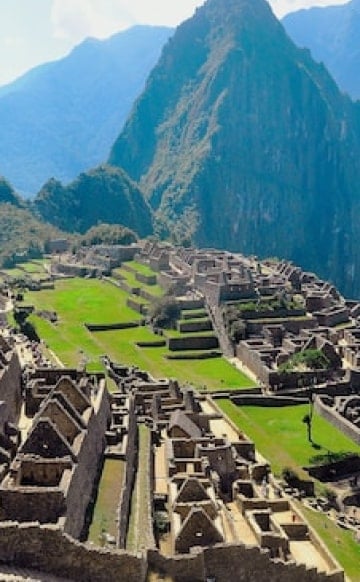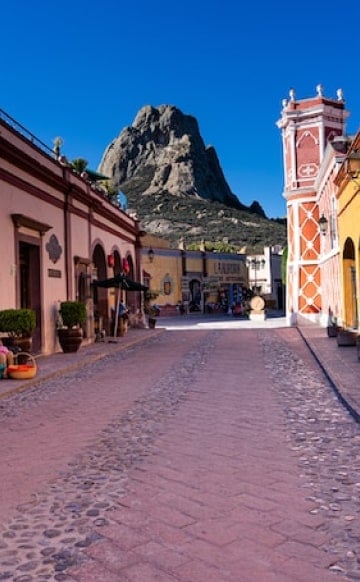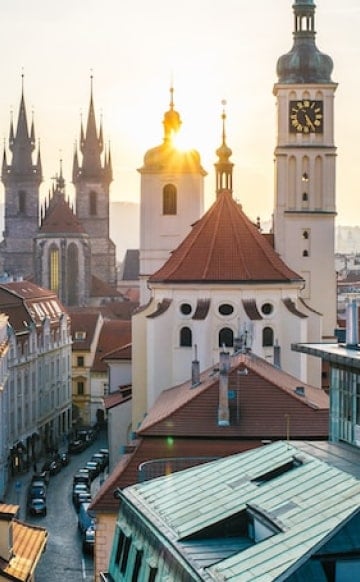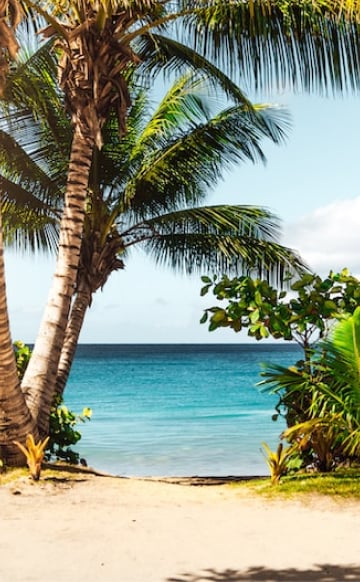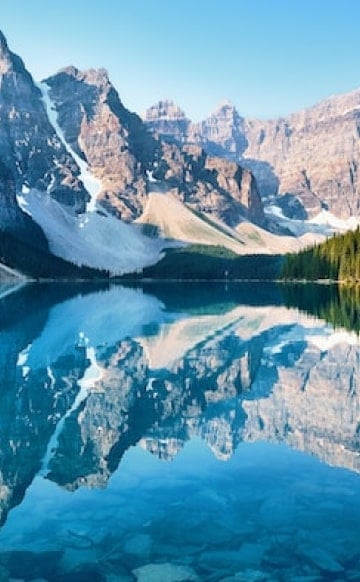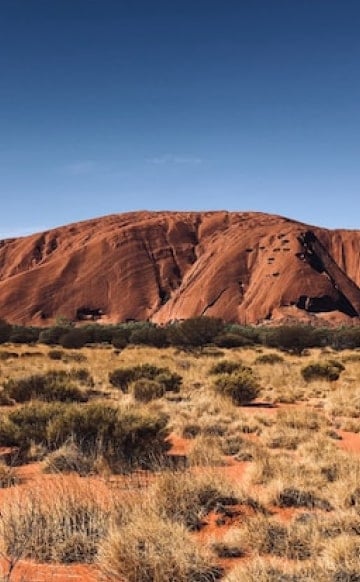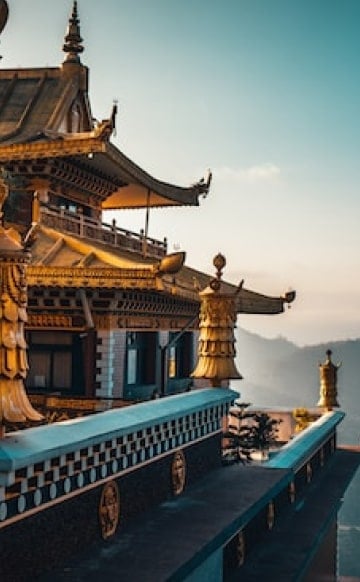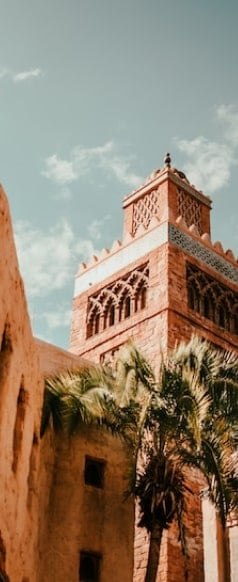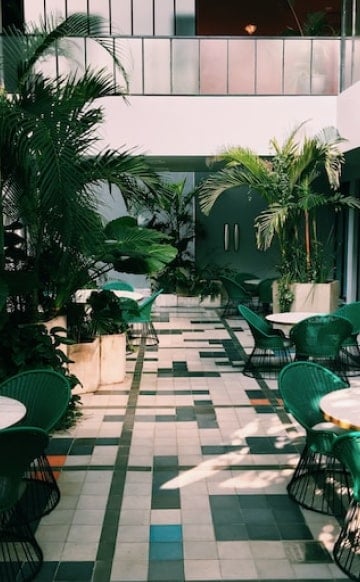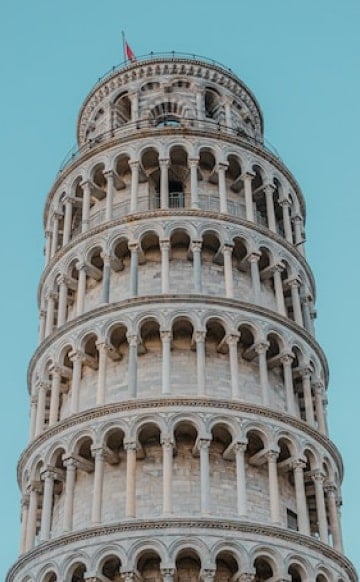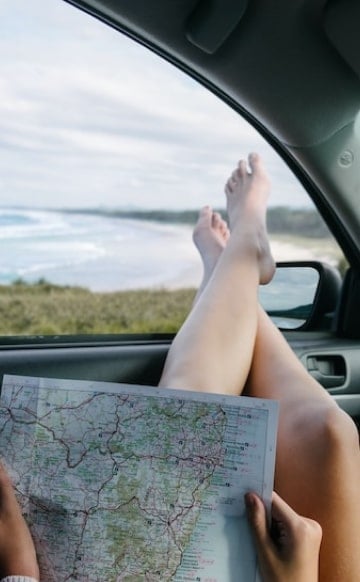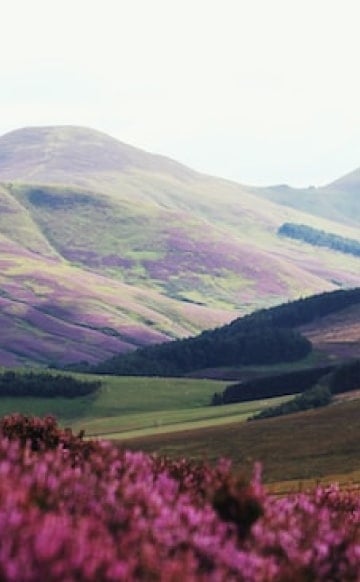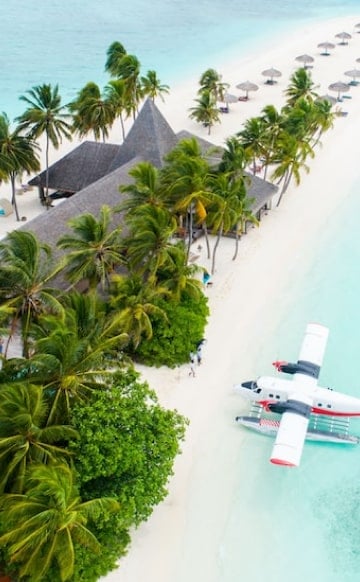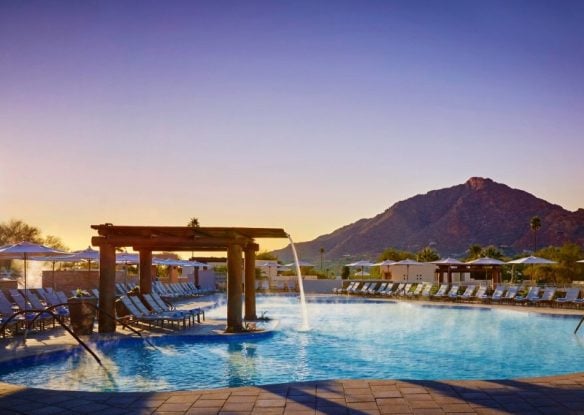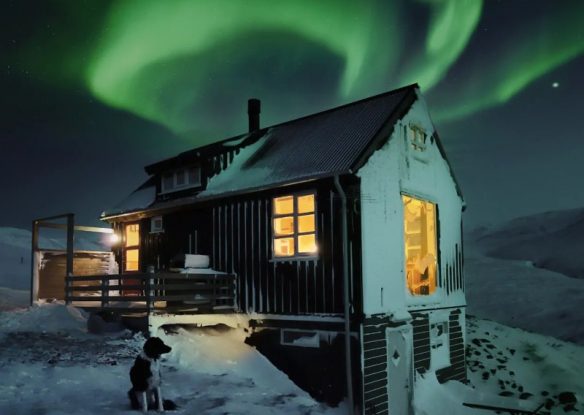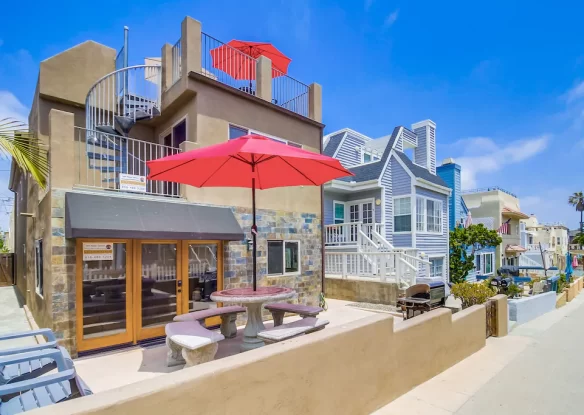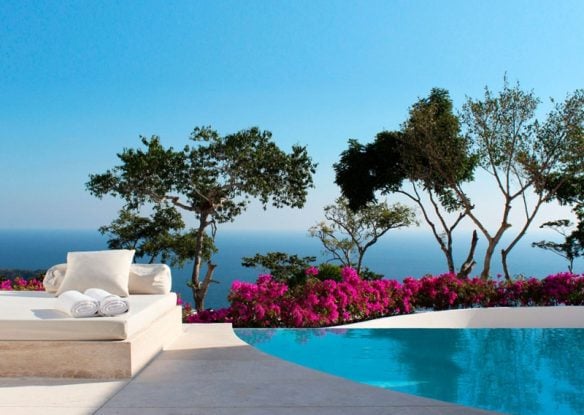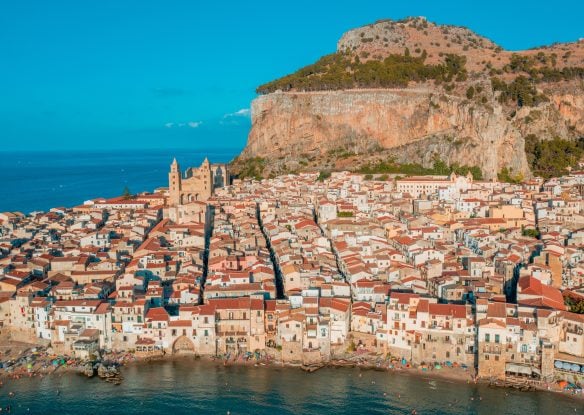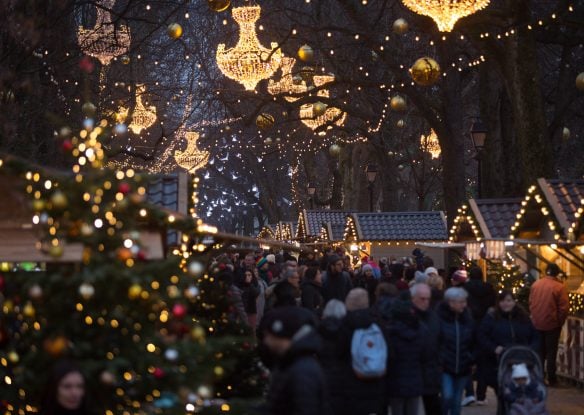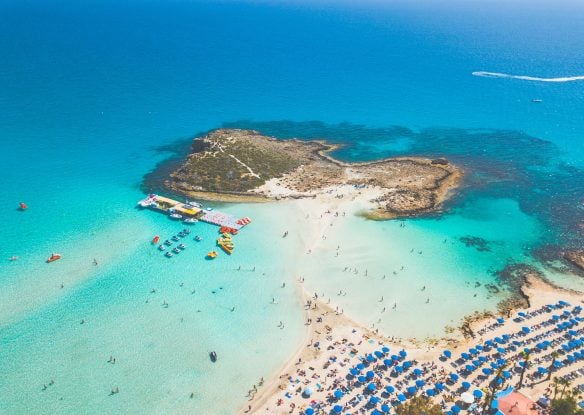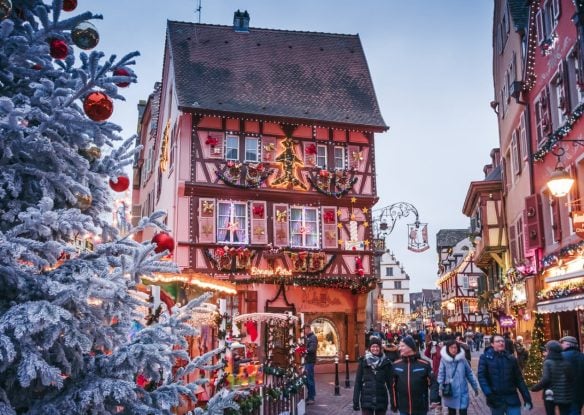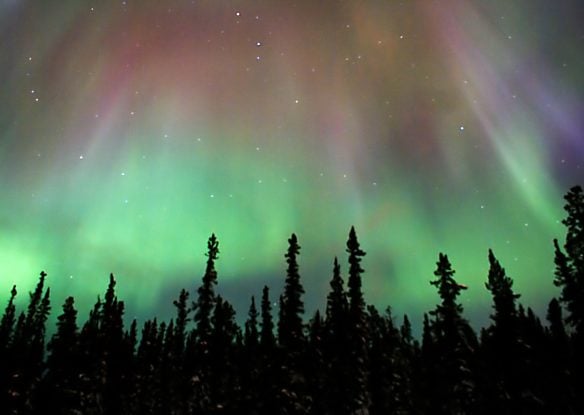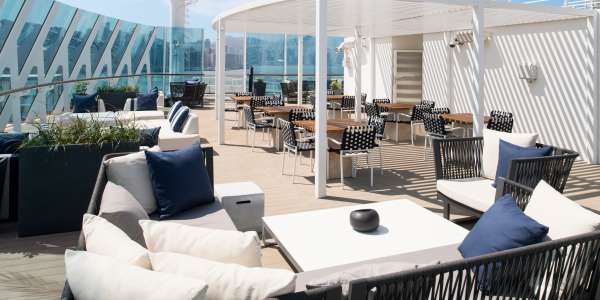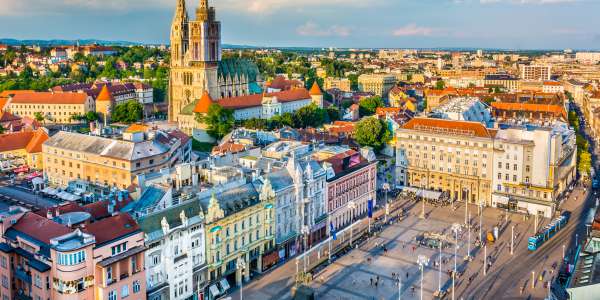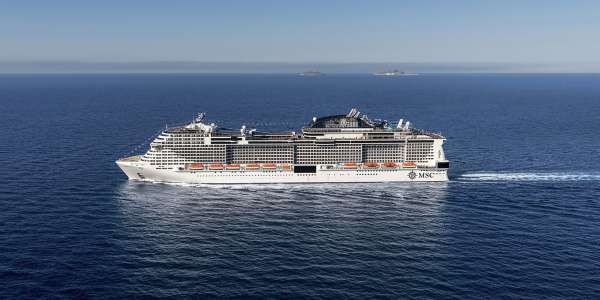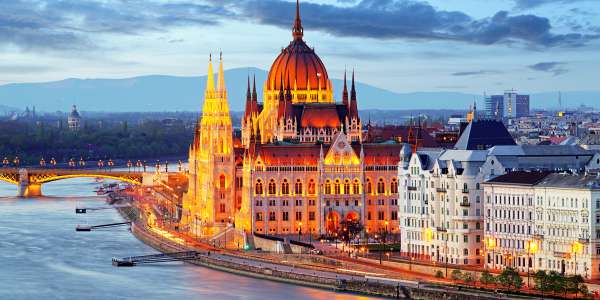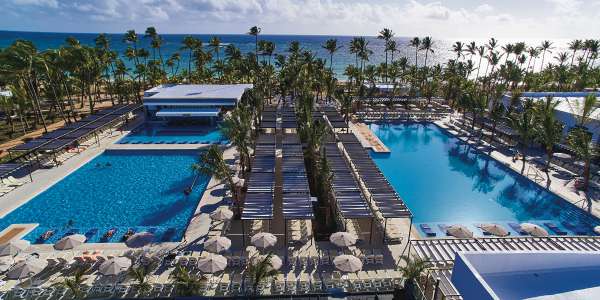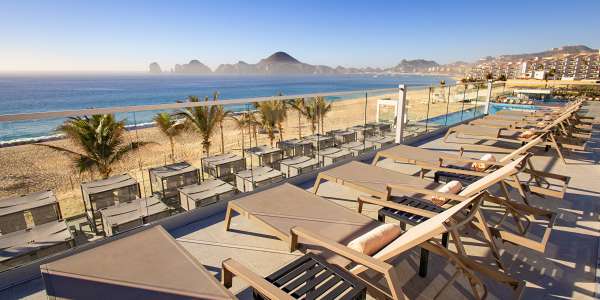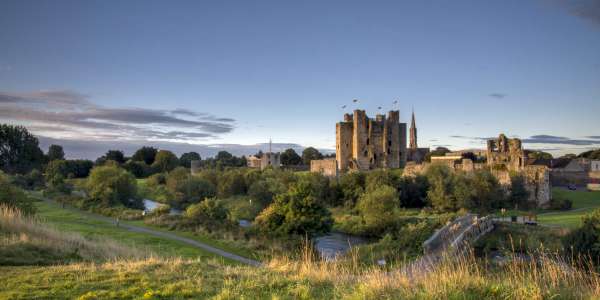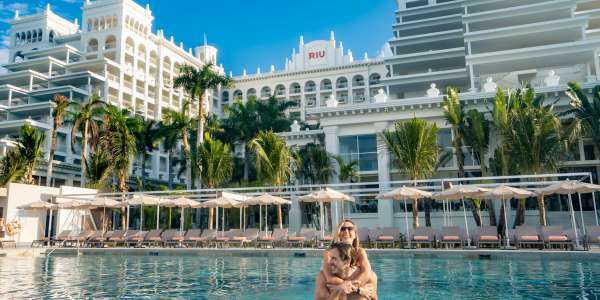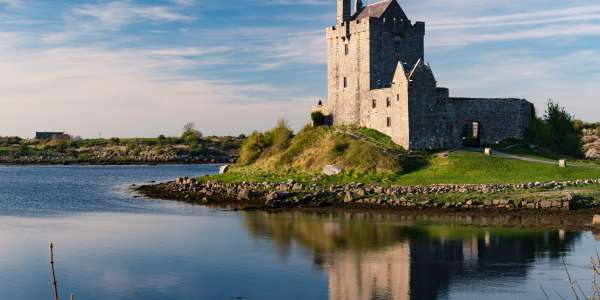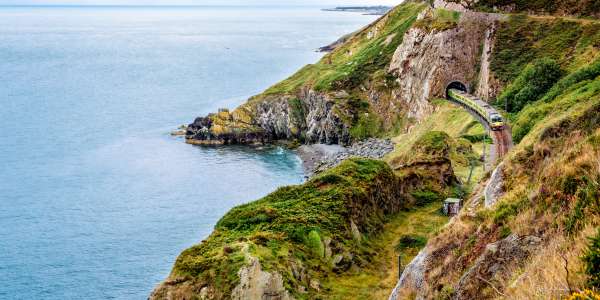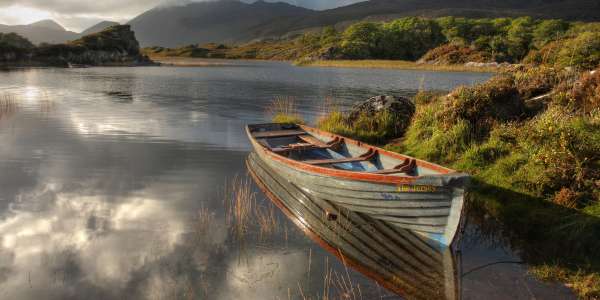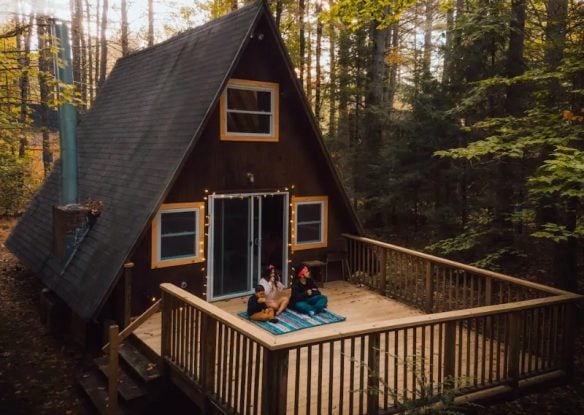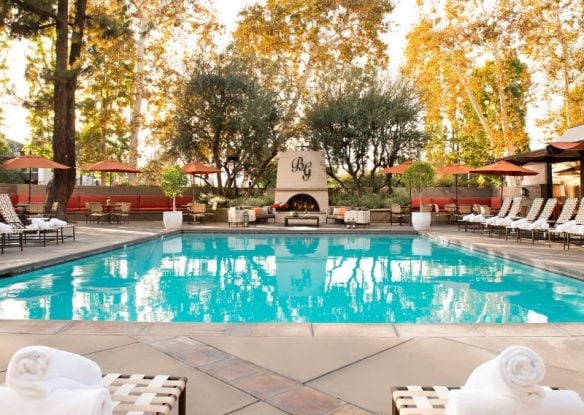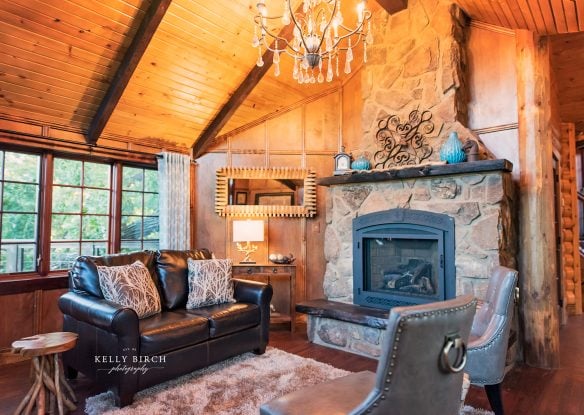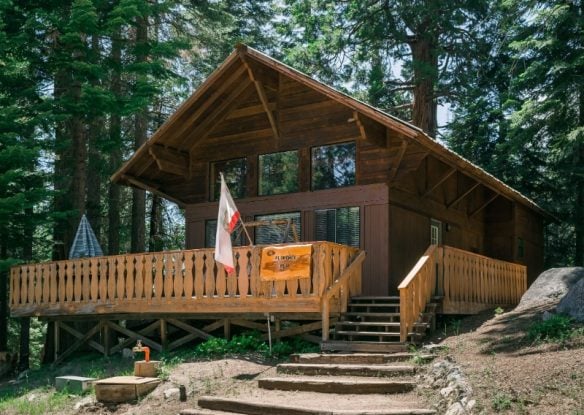While the world is increasingly shrinking, and it may seem like there is really no place left to get away from it all, there are still some places that are off the beaten path, sometimes very far off that path, that offer the chance to truly escape, while also enjoying some of the most breathtaking scenery on earth.

Gasadalur Village, Faroe Islands
This tiny, remote island village was in danger of being completely abandoned until a tunnel was built to connect it to the rest of the world. It sits at the edge of a soaring cliff overlooking the sea, with a ring of towering mountains cutting it off from the rest of its own island. Prior to a decade or so ago, the only way to get there was to hike over the mountainous terrain – the path over the mountain, where the post was carried three times a week, was the only connection to the outside world. Of course, you could always climb up the face of the cliff from a ship that was brave enough to venture close to the rocks. Either way, not exactly an easy jaunt.
Today, this mostly untouched place is best known for its magnificent waterfall and a spot that offers arguably the best views in the Faroe Islands. Lush green fields tumble toward steep drop-offs in the North Atlantic Gulf Stream, and combined with the colorful hodgepodge of simple Nordic homes, it makes for an especially dramatic, yet peaceful corner of the world few ever get to experience.

Quiraing, Isle of Skye, Scotland
The Isle of Skye is absolutely intoxicating with dramatic landscapes of towering, emerald covered mountains and unique rock formations, as well as sheer sea cliffs that dip down to seashell-strewn beaches at the edge of azure waters. Located on the north of Skye in the area known as Trotternish, the Quiraing is a surreal region of crags, pinnacles and bluffs that date back to the Jurassic period. Its star attraction is what’s known as the “Storr” a jagged ridge with its eastern face a labyrinth of craggy spires and pinnacles created by a massive ancient landslide. The tallest and most distinctive of those spires is the “Old Man,” which can be seen for miles around. The summit of the Storr can be reached fairly easily with a walk up a well-maintained path, revealing jaw-dropping views across Rona and Raasay to the Scottish mainland along the way.

Pitcairn Island, South Pacific
This tiny island in the South Pacific was settled by mutineers from the HMS Bounty. The less than 50 inhabitants that live here today are descended from the band of British mutineers and their Tahitian lovers. Secluded from mainstream tourism, this may be the very best place on the planet for the adventurous who are seeking a truly remote destination. Accommodation on Pitcairn is provided through local residents, sharing their homes, culture, language and lifestyle.
Not surprisingly, it’s not exactly easy to get there as the closest airport is more than 300 miles away on Mangareva Island. From there, you’ll have to take a three-day ocean voyage. There is just one general store, though the island does have electricity and the Internet. But your reward for the effort, are experiences that few others ever witness, with untouched subtropical island environments, pristine waters, endemic flora, bird and marine life – and, some of the most amazing hospitality you’ll ever encounter.

Meteora, Greece
Meteora, which means “Suspended in the air” in Greek, is a group of monasteries that are renowned as one of the most powerful examples of the architectural transformation of a site into a place of meditation, prayer and retreat. Located near the towns of Kalampaka and Kastraki in northwestern Thessaly, it’s made up of a number of rock pinnacles topped with a total of 24 monasteries. The immense, solid rocks, split by earthquakes, weathered by water and wind over millions of years, are nature’s authentic masterpieces. They illustrate a significant period of history, of the 14th and 15 centuries when the eremitic ideals of early Christianity were restored to a place of honor by monastic communities. Visitors come to admire the unique landscape and outstanding architecture or to get an understanding of the contemplative seclusion of monastic life.

Iles de la Madeleine, Senegal
Iles de la Madeleine, a pair of spiky, uninhabited outcroppings 2.5 miles west of the coast of Dakar in Senegal, feels like a land that time forgot. The black volcanic peaks are home to nesting cormorants and rare, red-billed tropic birds that sing from the unique dwarf baobab trees, which can’t be found anywhere else on earth. The peaks can be climbed to spy on the rare birds and take in some of the most breathtaking views on the planet. In this nature lover’s paradise, you might also spot northern gannets, terns, skuas and black kites. The largest of the islands, Sarpan, is known for its Stone Age tool finds. Though most boat trips off Dakar are constructed for game fishing, guides can be hired to take visitors to explore this ornithological sanctuary turned into a national park.

Socotra Island, Yemen
Want to see one of the world’s most incredible natural wonders? Described as “the most alien-looking place on earth,” the island of Socotra is part of an archipelago in the Indian Ocean. It’s so isolated that one-third of its plant life is found nowhere else on the planet, resulting in some especially bizarre flora. Most notable are its dragon’s blood trees, which look like flying saucers sitting atop trunks. The adenium socotranum trees look like elephants’ legs with pink flowers perched on them. There are also birds like the Socotra grosbeak, Socotra sunbird and the Socotra starling that are found nowhere else. The island is actually inhabited by about 40,000 residents, and while there are two roads, there is no public transport. Visitors can fly in as the island has its own airport, and vehicles can be rented if required.

Tristan de Cunha, South Atlantic
Tristan de Cunha is an archipelago of small islands located in the southern Atlantic Ocean. The nearest land is South Africa, roughly 1,700 miles away, while the South American coast lies is roughly 2,000 miles from the archipelago. The islands, with a population of fewer than 300 people, mostly farmers and craftsmen, are known as the most physically isolated place on earth, though they do have a connection to the outside world through satellite internet and television. The only way to get there is by taking a six-day boat journey from Cape Town as the rocky terrain isn’t conducive to building an airstrip. While there isn’t a lot to do on the most remote island on the planet, it is home to especially warm and welcoming people as well as having a rich history and a plethora of native wildlife that is truly unique. On Nightingale Island, the wandering, Yellow-nosed and sooty albatrosses all breed, and the Rockhopper penguins that live on all four of the Tristan Islands are also hugely popular with those who manage to make it there.
Accommodation is available in the form of home stays with the locals, who are descendants of one of seven families that originated from England, Scotland, The Netherlands, Italy and the U.S. They also serve as guides and sell crafts and souvenirs.

Sakhalin Island, Kuril Islands, Russia
Located seven time zones from Moscow and fairly close to Japan, this beautiful and mostly uninhabited island in the Kuril Islands off the east coast of Russia was banned to visitors until 1990, when it became a hotspot for oil drilling. The Austrian-sized island in the heart of the Sakhalinskaya Oblast has been Russian-run since World War II. While you could access its crystalline rock cliffs and unspoiled beaches from its Japanese neighbor, the more adventurous prefer starting their journey from Moscow and taking the Trans-Siberian Railway across the continent to Khabarovsk. From there, you’d hop a ferry to Komsomolsk, take a train to Vanino, and finally, take yet another ferry to Sakhalin. The reward for the long journey is discovering a wild forest filled with bears, legendary fishing rivers, 5,000-foot-high mountain tops and surrounding waters that are teeming with marine life, including western gray whales and northern fur seals.
Despite being a hub of economic activity due to its oil and gas projects, the island is blessed with nearly unspoiled nature. In the winter, frequent snowstorms keep airports closed for days on end, but in the summer, the island experiences lots of warm, sunny days as the best season to enjoy its quiet, secluded nature.

Nauru, Oceania
This tiny Micronesian island in the South Pacific is the least visited country in the world – but that’s not because it isn’t pleasant – in fact, its former name was Pleasant Island. Few make the trek to the island as its national airline, Our Airline, only flies from Brisbane, Australia to Nauru once a week – and, it’s not very reliable either. Most also have a layover on the Solomon Islands along the way. But once you get there, you can enjoy miles of untouched, white sand beaches and gorgeous emerald green cliffs inland. World War II buffs will appreciate the remnants of Japanese occupation scattered throughout. You’ll also have the opportunity to say you jogged around an entire country, if that’s your thing. Nauru is so small that it takes less than an hour to drive right around it.

Masoala National Park, Madagascar
Masoala National Park, Madagascar’s largest park, is also one of its least visited. Rainforest covers a range of mountains, dropping down to the deserted beaches of Antongil Bay where hump-backed whales come to breed and calve. There are also all types of exotic geckos that call the beachside forest home, in addition to tall pallisander trees, ferns, orchids, wild ginger plants and vines. When walking through the leafy forest, you’re likely to spot several different kinds of chameleons, like the hooded chameleon, stump-tailed chameleon and panther chameleon. The park is also the last refuge of the red-ruffed lemur, which you’ll see sunning themselves on the tops of trees in the morning. At night, eastern woolly lemurs are often viewed sitting in the tree forks.
Of course, places like this aren’t easy to get to. The best way to get there is to take a flight from Paris to Madagascar’s capital city of Antananarivo. Then, to get to the park, located on the northeast coast of the island, you’ll have to stow away on a cargo ship (it’s all legit though). And getting there is really a romantic adventure in itself.

Angle Inlet, Minnesota
Along the northern border of Minnesota, there is a piece of land that looks like it should be part of the province of Manitoba, though it’s actually in the United States, surrounded by Canada on three sides, and the Lake of the Woods on the other. This northernmost location in the contiguous U.S. has a population of just 60 and is part of the Northwest Angle. It can only be reached through Canada, by boat or by snowmobile.
But Angle Inlet isn’t just about seclusion, this is a fisherman’s paradise, with plenty of walleye and bass to go around, offering the chance to go ice fishing in the winter and traditional fishing as well as golf in the summer.

Foula Island, Shetland Islands, Scotland
Foula is a small island, 20 miles off the west of Scotland from its northern tip. There are just 31 people who live there, most of which make their living from fishing, though in recent years, some have earned at least part of their living through sheep herding and tourism. The aptly-named film, “The Edge Of The World,” was filmed here in 1937. Britain’s most isolated inhabited island not only offers magnificent views that stretch from Unst to Fair Isle on a clear day, but it’s home to a colony of bonxies, or great skuas – the world Foula means “Bird Island,” in Old Norse. The Foula community still has a strong Norse tradition of folklore, music and special festivities, even celebrating Christmas and New Year according to the feast days of the old Julian calendar – Yule on 6th January and Newerday on the 13th.
The island is designated as a Special Protection Area for birds, a National Scenic Area and a Site of Special Scientific Interest for its plants, birds and geology. Visitors can also watch the grey and common seals that hang out around its shores, and killer whale pods are sometimes spotted swimming close to shore.

Svalbard Islands, Norway
This group of islands at the northern tip of Norway offers everything from close-up encounters with icebergs and glaciers to the archipelago’s abundance of wildlife. Known as one of the last great untouched wilderness areas in Europe, these tiny islands that sit between the Norwegian Sea, the Arctic Ocean, Barents Sea and the Greenland Sea are home to more polar bears than people, with less than 3,000 calling it home. In addition to polar bears, you’ll have a good chance of spotting walrus, seals, reindeer, polar foxes and all types of birds who co-exist in this harsh, but beautiful landscape.
Svalbard is so remote that it hosts the Global Seed Vault, which provides a safety net against the accidental loss of diversity in case of a major regional or global disaster. To get there, you’ll need to go to Oslo, Norway first, and then hop a flight north of the Arctic Circle to the city of Tromso. From Tromso, you’ll catch a flight to Svalbard’s largest settlement, Longyearbyen.

Lundy Island, Devon, England
This three-mile-long, half-mile-wide island lies off the coast of Devon, where the Atlantic meets the Bristol Channel, with nothing in between it and America. This unspoiled isle with fewer than 20 residents is filled with dramatic scenery and a fascinating array of wildlife, as well as being steeped in history with a number of interesting places to visit. The lighthouse, which sits at its center, is said to be the highest in England. Though it was decommissioned, it is open to visitors, offering the chance to climb the steep and precarious spiral staircase to the top, from which the whole island can be observed.
Undisturbed by cars, it’s extremely peaceful as well as completely noncommercial – there are no signs, and the only fences are there to keep farm animals in. You will find a small village with an inn, a Victorian church and a 13th-century castle. Some of the wildlife that can be seen include puffins, seals, dolphins, and occasionally, a basking shark.

Bhutan
Bhutan, set between the Tibetan Plateau and India on the Himalayas’ eastern edge, is a very remote destination that was under self-imposed isolation for the majority of the 20th century, making it an ideal spot for those who want to escape the chaos of the real world. Getting here is challenging and expensive, but worth it if you can make the trek. Tourism arrived less than 40 years ago, enabling this hermit kingdom to preserve its rich cultural identity. Taktsang Palphug, aka the Tiger’s Nest, is the highlight of traveling to Bhutan for many. Perched on the edge of a cliff, more than a half-mile above the rice fields of Paro, the 320-year-old monastery is considered one of the kingdom’s most sacred religious sites. In its capital city of Thimphu, you’ll find both old and new, including crimson-robed monks, Indian laborers and government ministers donning traditional dress all sharing the same pot-holed pavement.

Ittoqqortoormiit, Greenland
Ittoqqortoormiit, which means “Big-House Dwellers”, isn’t exactly aptly named as there aren’t many large homes here, though you will find some of the most incredible fjords on earth. This small village of 450 sits right next to the world’s largest and deepest multi-branched fjord system, and a special basalt rock formation with horizontal lines running through the cliffs. Despite sea ice blocking ship access to the town for nine months of the year, the village has become an increasingly important cruise destination for smaller, expeditionary vessels to explore the country’s wildlife, nature and culture. It has everything an outdoor enthusiast could ever want, including skiing through June, sailing and dog sledding. To get there, if you don’t arrive via ship, you’ll have to take the once-weekly charter flight from Reykjavik, Iceland.

Concordia, Pakistan
Located on the border between China and Pakistan, Concordia is the only place on earth where you can see four mountains that are over 26,000 feet in height all at the same time. Considering that there are just 14 in the world, that’s pretty impressive. The catch? It takes a ten-day journey by foot to access –that’s after you’ve flown into Islamabad, the capital city, followed by a three-day drive to Askolie, the last village before Concordia. If you’ve got the energy to spare, you can always climb a K2 when you get there.

Deception Island, Antarctica
It’s hard to get more remote than the bottom of the earth. Located off the Arctic Peninsula, the island with the ominous-sounding name was called as such after a plane crashed here having misjudged the island’s distance. It’s said to appear normal from above, but as it’s a volcano’s caldera, it’s actually completely hollowed out. The horseshoe-shaped landmass is the location for summertime scientific research as well as a tourist destination where visitors can view tens of thousands of chinstrap penguins, seals and rusting relics from the whaling era. You can even soak in a thermal bath on an Antarctic beach due to the heat hidden its black sands. All you have to do is dig a hole to sit in the steam.

Skellig Michael, Ireland
Rising abruptly out of the Atlantic Ocean, six miles off the southwest coast of Ireland, getting here requires a rather rocky boat trip, but your reward is a craggy, windswept island with stone steps reaching to a cluster of beehive-shaped stone huts that date back to the sixth century. It was here on the 750+ foot high cliff tops that early Christian monks once lived in their pursuit of a greater union of God, withdrawing from civilization to this remote and inaccessible, yet beautiful destination. While making the steep 600-step climb to view the monastic remains, look for all types of seabirds, including Gannets, Black Guillemots, Cormorants, Razorbills and Herring Gulls.

Mountains of Mourne, Northern Ireland
A walk through these lonely, rugged mountains with no interior roads feels as if you’ve discovered Tolkien’s Middle Earth. This mountain range in County Down is famous for its glistening lakes and challenging peaks that serve as one of nature’s most beautiful playgrounds. Climb the nearly 2,800-foot-high Slieve Donard for spectacular views over Murlough Bay and the town of Newcastle, or enjoy easier strolls across the gentle slopes of Butter Mountain, Slieve Lamagan, Slieve Binnian or Slieve Corragh. It was these very mountains that Belfast-born Clive Staples Lewis, better known as CS Lewis, got his inspiration to create the world of Narnia from his masterpiece The Lion, The Witch and The Wardrobe. He once wrote, “I have seen landscapes (in the Mourne Mountains) which, under a particular light, made me feel that at any moment a giant might raise his head over the next ridge.”

Qinghai-Tibet Plateau, China
The “Roof of the World” as it’s often called, is the largest and highest plateau on earth, regarded as the third pole, its remoteness and harsh climate rival even the Arctic and Antarctic. It supports a wide range of flowers, herbs and rare animals in a diverse array of climate zones ranging from high-altitude polar to tropical, desert and wet. The Himalayans, south of Tibet, draw travelers each year to explore its old Tibetan culture and unspoiled scenery filled with snow-capped mountains, turquoise lakes, grasslands and glaciers. Entering this remote region, you’ll feel as though you’ve entered an entirely different world. The traditional Tibetan culture, though diluted by government-sponsored migrations of Han and Hui Chinese, remains strong and central to the region.

